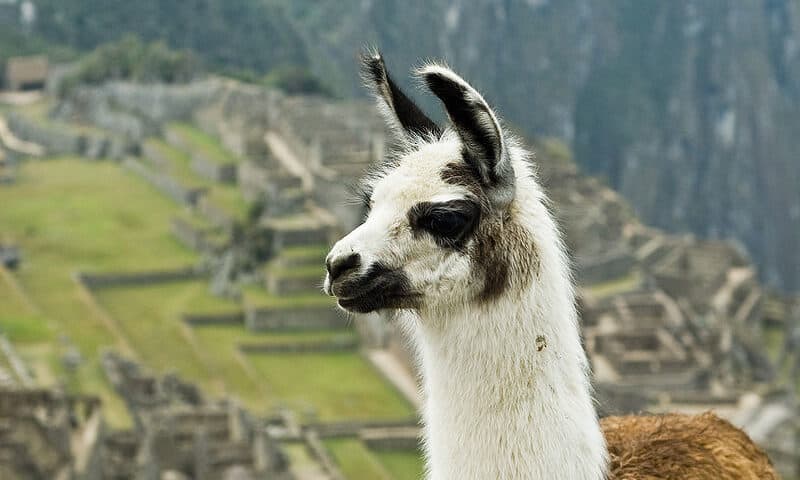Just weeks after ExeVir Bio was spun out of a Belgian research institute to develop a llama-inspired antibody treatment for COVID-19, a rival effort has sprung up at the University of California, San Francisco. Now, the UCSF team is reporting promising preclinical results for its aerosol formulation—and suggesting it could be used as a self-administered form of protection against the virus.
Llamas and other camelids fight off pathogens like viruses with tiny antibodies called single-domain antibodies or “nanobodies.” The UCSF team used protein engineering to make a synthetic nanobody that prevents the spike protein on the surface of SARS-CoV-2, the virus that causes COVID-19, from binding to healthy cells and infecting them.
In tests against the live virus in the lab, an aerosolized form of the nanobody rendered SARS-CoV-2 incapable of binding to the ACE2 receptor on healthy cells that line airways. The synthetic nanobody remained functional after it was freeze-dried, exposed to heat and aerosolized, they reported (PDF) in the preprint journal bioRxiv . The UCSF team dubbed the aerosol formulation “AeroNabs.”
The researchers started by screening a library of synthetic nanobodies, eventually landing on 21 that prevented the spike-ACE2 interaction. But they knew that to be truly potent, a nanobody-based treatment would need to interact with all three of the “receptor binding domains” (RBDs) on the spike protein that attach to ACE2.
So, they engineered a “molecular chain” that joins three nanobodies together, according to a statement from UCSF. That ensured that if one of the nanobodies attached to one RBD, the others would link up to the two remaining RBDs—and it resulted in a drug candidate was 200,000 times more potent than a single nanobody.
“The AeroNabs stay on the spike protein for an enormously long time,” Peter Walter, Ph.D., professor of biochemistry and biophysics, said in a video from UCSF. After tracking the AeroNabs for a week in the lab, the researchers observed that they were still firmly attached to the spike protein.
Aashish Manglik, M.D., Ph.D., an assistant professor of pharmaceutical chemistry at UCSF, added that the AeroNabs should be easy and inexpensive to make “in industrial quantities” in bacteria or yeast. “It’s so robust that we can dry it down into a powder that enables us to ship it across the world,” he said.
ExeVir Bio is also developing an aerosolized COVID-19 treatment inspired by llamas, and it recently raised €23 million ($27 million) to advance its candidate into clinical trials by the end of this year. ExeVir’s lead product candidate, VHH-72Fc, was designed to bind to an epitope that’s found in both SARS-CoV-2 and SARS-CoV, the related virus that caused an outbreak in the early 2000s. Scientists at VIB, the research institute that spawned ExeVir, developed VHH-72Fc by first immunizing llamas with spike proteins.
The llama-inspired treatments that are in the works are significantly behind antibody efforts like that of Regeneron, which advanced its COVID-19 treatment cocktail into human trials in June. Regeneron is also testing the antibody-based candidate, called REGN-COV2, to see whether it can prevent infections in healthy people who have been exposed to the virus.
Then there are the multiple vaccines that are being developed to prevent the disease altogether. Some analysts have named Moderna and Novavax front-runners in that effort, but multiple large companies are following close behind, including Johnson & Johnson, AstraZeneca and Pfizer.
UCSF’s Walter said the llama-inspired AeroNabs could be used as a sort of personal protective equipment, a “stopgap” until the vaccines become available. UCSF is planning human trials and is in discussions with partners who could provide manufacturing and distribution support.

